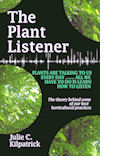Feed the Birds in Winter
Bird populations are controlled by the availability of their natural foods but artificial feeding does contribute to their survival especially if the weather is very harsh.
In very cold weather, insect eaters can't break through the frozen ground to get at invertebrates, worms retreat further underground and are harder to find. Small birds like long-tailed tits and wrens may die because there aren't enough hours of daylight to meet their feeding requirements.
All our local birds can stand quite a bit of cold but they do need more fuel to help keep them warm. Quite apart from the fact that you'll be doing the birds a favour you'll get a lot of enjoyment out of it too and you'll be surprised by the number of different species that will visit your feeding station.
Bird tables are an excellent idea as they allow the birds to feed away from hunting cats. You can put a tray on the ground for ground feeders like dunnocks and thrushes but these birds will often wait at the foot of bird tables anyway for bits of food that are knocked off by the birds above. Site your bird table close to, or on, a tree if possible so that the birds can queue on the branches. If you don't have a tree nearby, you can set up some posts and perches and put your table away from bushes where cats might be hiding. If you want to do a spot of bird watching, make sure you can see the table from a window.
You can buy bird tables from garden centres or you can make one yourself. If you do make your own, ensure there are no sharp edges or nails sticking out. As well as the bird table, you can hang peanut and seed feeders or fat balls from the branches of a tree.
Water is important too - for drinking and for maintaining plumage. In cold weather, go out and break the ice in bird baths. You need to clean your bird bath frequently to avoid build up of algae.

Try to provide a wide choice of food that will suit a good variety of birds. Here's a selection of foods to offer on your menu:
- suet
- bacon rinds
- tinned pet food
- mealworms
- maggots
- cheese
- hard-boiled eggs
- berries
- apples
- fat balls
- unsalted nuts
- mixed seeds
- hemp seed
- melon seeds
- sunflower seeds
- boiled or baked potatoes
- fresh coconut
- biscuit, bread & cake crumbs
Once you start feeding the birds, it's only fair to keep doing so all the way through winter. As the weather warms up, you can gradually decrease the amount of food you offer. It's best to stop feeding hard foods like seeds and peanuts during the time that parent birds are feeding their young because seeds etc. may choke fledglings. You can still help parents birds by buying maggots or mealworms from your local fishing shop and putting these out in tubs. If you can't stomach the idea of maggots, other animal fats like bacon rind and suet will do.
Julie is a lecturer in horticulture, editor of Gardenzine and author of the book The Plant Listener
Want more from Gardenzine? Search Gardenzine for articles here:








